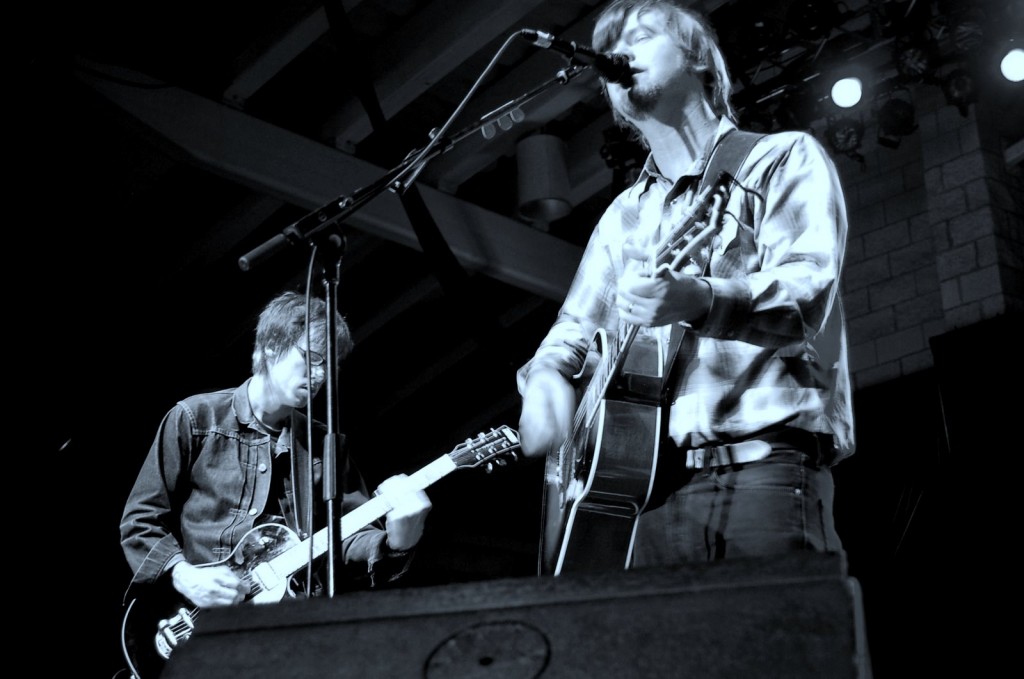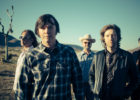SON VOLT – Thu., June 6, 2013 – High Noon Saloon
| Event Details: | SON VOLT |
| When |
Thursday, June 6, 2013
|
| Where |
701 East Washington Avenue
Madison, WI 53703-2958 Madison, WI |
| Other Info | SON VOLT * HONKY TONK * (Rounder, March 13, 2013) "Break up the silence Make it clear Make it last…" – "Down the Highway" From his earliest recordings in the 1990s as a founding member of Uncle Tupelo, Jay Farrar has been a keen observer of the American landscape: its beauties and its tragedies, salvations and poisons. It's a perspective that's been hard-won by steady touring and travel through this nation, and Farrar's almost two-decades as the leader of Son Volt (as well as impressive turns as an acclaimed solo artist and collaborator) have only deepened and sharpened his gift for capturing the sights and sounds of his American journey – a gift which is in evidence once again on Son Volt's sixth studio album: Honky Tonk. After all, few places are as quintessentially American as the honky tonks where neon beckons to lonely and discontented souls with the promise that sorrows can be drowned in whiskey, cigarettes and a timeless music in which the clear hard truths of its lyrics mine the emotional complexities of life and love as fiddle and pedal steel sweetly commiserate. "Honky tonk music is about heartache, heartbreak, the road," Farrar observes. That music provides a touchstone for eleven new Son Volt songs that excavate the classic honky tonk sound of Bakersfield (and Texas and Tennessee too) yet distill and reimagine it. Honky Tonk stays true to what's so appealing about honky tonk music, while stretching out its familiar contours into new shapes and spaces. Farrar reflects that as he wrote and recorded the music so deeply steeped in tradition for Honky Tonk, "I realized I also wanted these songs to sound more contemporary and modern. There was no strict adherence to methodology of the past. You never want to be a nostalgia act." "Always a common thread between us…" – "Heart and Minds " Farrar sees Honky Tonk as a record moving forward on the path toward a more acoustic-based music that Son Volt took on its last record, 2009's American Central Dust (also on Rounder). "The record is a continuation of what was happening with American Central Dust," observes Farrar. "Once again, I didn't play much if any electric guitar." Like American Central Dust, Son Volt recorded Honky Tonk in Farrar's studio in St. Louis, with Mark Spencer (who also plays bass guitar, pedal steel and keyboards) at the recording helm. Dave Bryson provided drums and other percussion. Most of the songs on Honky Tonk were written in a two-week burst, and many of its compositions mine a more thematic lyrical vein inspired by a traditional country music aesthetic, which Farrar first explored on the band's previous record. "I was always averse to using certain words in songs," recalls Farrar, "including 'love' and 'heart.' But I started using them on [American Central Dust] and now I guess the floodgates have opened." Indeed, many of Honky Tonk's songs dwell on affairs of the heart, including the album's opening tracks, "Hearts and Minds," a speedy Cajun waltz which assays the delicate balance between love's steadfastness and its caprice, and "Brick Walls," a lover's plaint steeped in pedal steel that embraces the notion that "love's a Spanish word to be sung." It's also there in a song like "Barricades," which affirms the necessity of pushing forward in the face of overwhelming despair and defeat in a way that makes it seem that playwright Samuel Beckett might have had a backing band called the Buckaroos. "No wage can buy what the world never wanted," Farrar sings. "Hearts press on anyway, undaunted." This continuing lyrical turn toward the heart is woven into an even more countrified sound on Honky Tonk. Much of the immediate inspiration for the intense exploration of honky tonk music came directly from Farrar's recent decision to learn to play a new instrument. "In the time in between Son Volt records, I started learning pedal steel guitar," Farrar says. "I play with a local band in St. Louis now and then called Colonel Ford. So I was immersed in honky tonk music, the Bakersfield sound, in particular. And it was almost second nature when I started writing the songs for this record." Indeed, a song titled "Bakersfield" serves as a swaggering Baedeker to the enduring musical and lyrical charms of the genre, from its evocation of Merle Haggard in the "sound of heartbreak from a jail cell" to the bars where "hell breaks loose on Saturday night" and its nod to the agriculture heartland in which many of these classic songs are rooted, a place where workers "sweat and toil one with the land." "No cup of gold, no Candy Mountain," sings Farrar. "No better place to make a stand." That pedal steel sound that Farrar has grown so fond of playing winds through most of the songs on Honky Tonk, with much of the playing provided by St. Louis musician Brad Sarno. But Son Volt's leader also found places on the record to work in another signature of that classic music: a jolt of twin fiddle provided by 2010 Grand Master fiddle champion Justin Branum and Gary Hunt (who also plays mandolin and electric guitar on Honky Tonk). "Twin fiddles were such a feature of the 1950's Grand Old Opry," says Farrar. "I was watching some old episodes where there were two and sometimes three fiddle players in the house band. It's an interesting sound, a natural chorus effect". Album opener "Hearts and Minds" is one song where that trademark twin fiddle dominates, and Farrar recalls with pleasure the interplay between Branum and Hunt in the recording of that tune. "When we were listening to the playback of the song," Farrar says, "I heard Justin make the comment, 'Here's where I add the third fiddle.' Justin is one fiddle player approximating the sound of two while he plays side by side with Gary, which at certain points in the song actually sounds like three fiddles playing." Farrar also points to the enigmatic "Seawall" as another place on the record where twin fiddle provides key element of the sound. "There's a lot of power when the whole band drops out, and you get a burst of twin fiddle," he observes. Yet for all its hearkening back to a classic sound, Honky Tonk possesses a restless urge to make its source music new. On the somber "Livin' On," St. Louis roots music stalwart Thayne Bradford's accordion is stretched out into a cold, haunted and disorienting sound that matches perfectly with Farrar's meditation on a defiant stubbornness – the "reckless side of tradition" – in which "not even happiness falling down/ can ever change your mind." For a music that seeks to evoke the dark and smoky corners of the soul, classic honky tonk music (especially the Bakersfield variety) boasts an enviable clarity and crispness in its production. So in the moments when Son Volt washes the genre's trademark instruments in echo, or distorts them to a shimmer or shards, it's hard not to hear Farrar's acknowledgment of what time's passage has wrought on the music – and of the powerful ghosts tend to appear when old songs are summoned up. Or, as Farrar himself asks on "Seawall," a song on which the inevitable decay of what we do and build is evoked so powerfully: "Do honky tonk angels still walk this ground?" |







